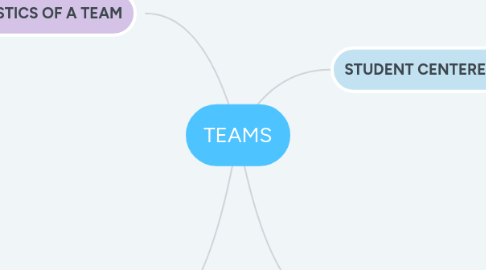
1. CHARACTERISTICS OF A TEAM
1.1. Teams have clearly articulated goals; an educational team’s goal is effective service delivery leading to positive student outcomes
1.1.1. Maintaining the team’s focus on the delivery of services is an important team function
1.2. Members are aware of their team membership, roles, and responsibilities
1.2.1. Individuals cannot be part of a team unless they perceive themselves to be so
1.3. Team interactions are regulated by shared norms
1.3.1. Shared norms regarding how interactions occur, what acceptable team member behavior is, and the way team business is conducted facilitate effective team functioning
1.4. Team members are interdependent
1.4.1. Members of teams are highly interdependent because their organizational roles are functionally interrelated
1.5. Team members have unique skills and perspectives
1.5.1. Regardless of the purpose or size of a team, the unique skills, expertise, or perspectives of team members create a rich context for creating effective programs and services.
2. RELATIONSHIPS
2.1. Multidisciplanary
2.1.1. The rationale for multidisciplinary special education teams is that a group decision provides safeguards against bias or individual errors in judgment and ensures greater adherence to the law’s due process requirements
2.2. Interdisciplinary
2.2.1. Interdisciplinary teams coordinate the interventions they deliver to students.
2.3. Transdisciplinary
2.3.1. Professionals perform their related tasks interactively and, through a process known as role release, individual team members may share or blend their roles at least in part.
3. STUDENT CENTERED
3.1. Instructional Teams
3.1.1. Co-teaching Teams
3.1.2. Middle School Teams
3.1.3. Grade Level Teams
3.2. Problem Solving Teams
3.2.1. Traditional Student Problem Solving Teams
3.2.1.1. Teacher Assistance Team
3.2.1.2. Intervention Assistance Team
3.2.2. RTI Teams
3.2.2.1. Response to intervention
3.2.2.2. collaboration and teamwork are critical
3.3. Special Education Teams
3.3.1. IEP Teams
3.3.2. make decisions about a student’s eligibility for special education and the nature of the services to be provided
